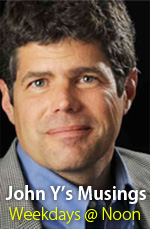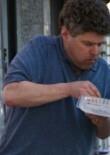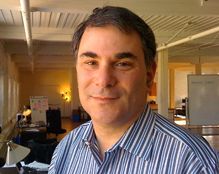After much deep and reflective thought, I have decided not to sign up to use the widely advertised online IQ enhancer, Luminosity.
Luminosity apparently trains your brain and makes you much smarter. Well, that sounded pretty good to me. And Lord knows I could use a few extra IQ points.
But after thinking it through with my God-given brain, I have concluded that if I use Luminosity to improve my brain and IQ, I will lose all my friends with less than genius IQs (and that would be all my friends, except one, who I frankly don’t care much for). These friends I would lose like me because I am forgetful and disorganized and earnest and apologetic and hapless and like joke about it all.
I fear I will lose all my friends and they won’t like me anymore if I become some super-brainy guy who knows all the answers to Jeopardy —and seems to be much smarter than all the other people (who don’t use Luminosity).
 I wonder if anyone has done a study on the impact of the alienation from friends that Luminosity has caused its users?
I wonder if anyone has done a study on the impact of the alienation from friends that Luminosity has caused its users?
I am not waiting around for such a study. Common sense tells me it’s not worth the trade-off. I’d rather not be a Luminosity super-genius than lose all my friends! And I am not changing my simple non-luminous mind about that!
I sure hope my friends appreciate this sacrifice when I tell them about it….and don’t all start using Luminosity themselves and leave me behind!










